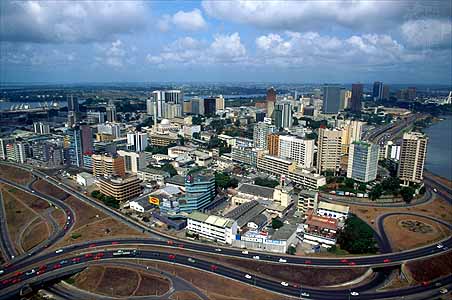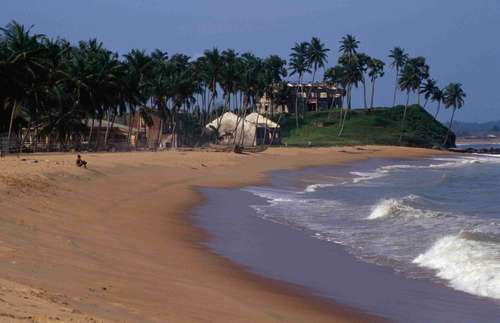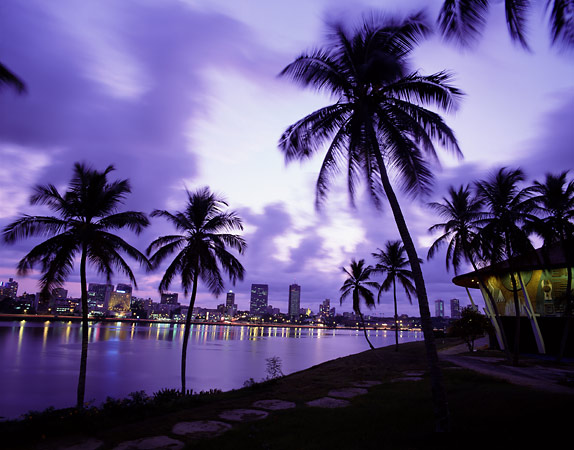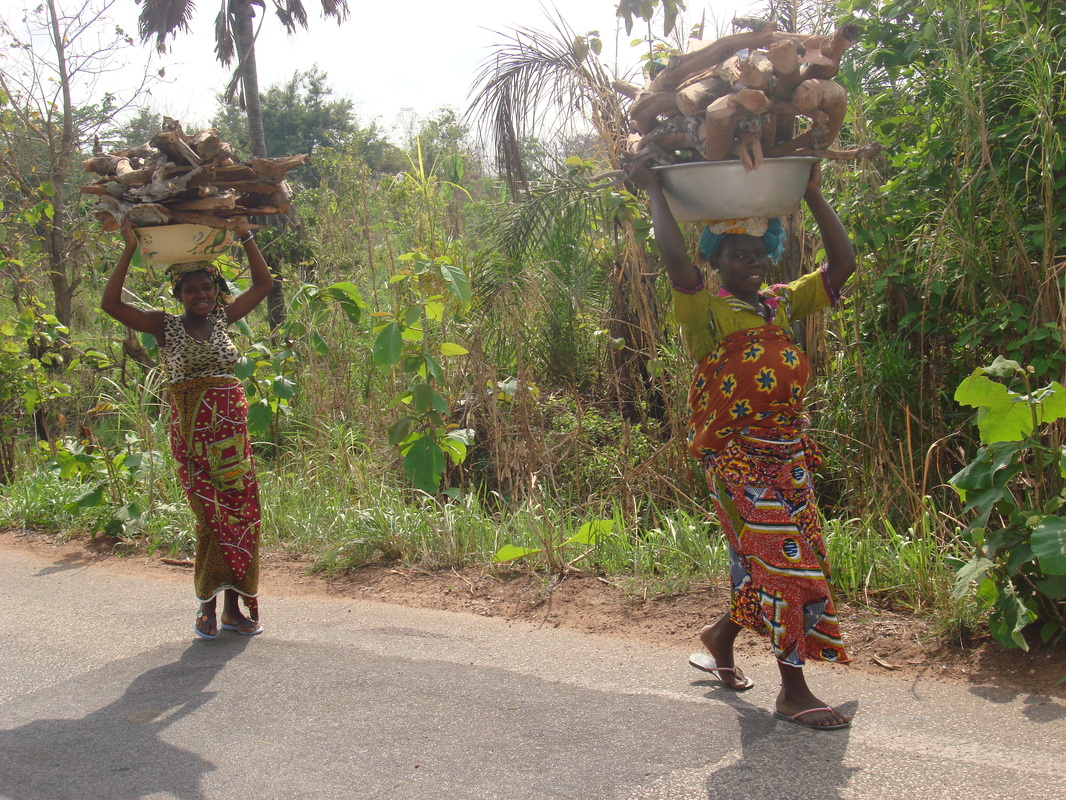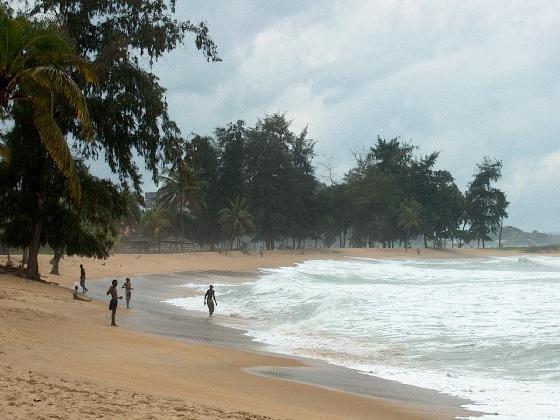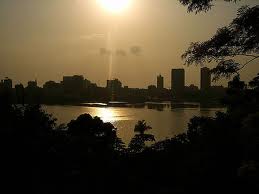PeopleCote d'Ivoire has a population of 16,310,500, 77% of whom are native Ivoirians. Twenty percent are workers from Liberia, Burkina Faso, and Guinea, and there is a relatively small non-African population of French, Vietnamese, Lebanese, and Spanish. Officially the language is French and Cote d'Ivoire does maintain close relationships with France. But there are over 65 different languages spoken in the country, and Dyula is the most common.
|
The country of Cote d'Ivoire is on the western coast of Africa and offers beautiful beaches, natural beauty, and plenty of things to do. Perhaps you'd enjoy Yamoussoukro, the capital city, with its replica of the St. Paul's Cathedral, just as in Rome. Or you may prefer the city of Abidjan, the country's largest, with modern accommodations and amenities and a very modern business district. If you like open air cafes, called maquis, you can people watch while you eat a delicious meal. Spend an afternoon visiting the Cocody Municipal Museum of Contemporary Art or the municipal library. For nature lovers, there is the Parc du Banco rainforest reserve. Clearly, Cote d'Ivoire has much to offer visitors. |
Geography
The country is made up of coastline to the south, rising to a plateau towards the interior. There are few mountains or hills and the climate is warm and tropical, with average temperatures ranging from 72 degrees Fahrenheit (22 degrees Celsius) to 90 degrees Fahrenheit (32 degrees Celsius). There are three distinct seasons: warm and dry from November to March, hot and dry from March to May, and finally hot and wet from June to October.
Famous AttractionThe largest city in Cote d'Ivoire, Abidjan, has one of the only high-rise business sections in Western Africa. The accomodations are good and allow easy access to the nightlife, the national library, or the Cocody Municipal Museum of Contemporary Art, and the Parc Du Bunco Rainforest Reserve is nearby. Banco National Park may not have a World Heritage Designation but it does have good walking trails and easy access to nearby hotels. Take an afternoon walk around the park then come back to the maquis, the local outdoor cafes peculiar to Cote d'Ivoire.
Cote d'Ivoire has no less than ten national parks, of which four are designated World Heritage Sites. The Comoe National Park received this designation for its diversity of plant life. Mount Nimba Strict Nature Reserve boasts 200 native species, while Tai National Park was named for its breadth of flora and fauna. |
HistoryPeople have lived in Cote d'Ivoire since prehistoric times; the first recorded history is found in logs from traders in early Roman times. The inland portions of the country were part of the great trade routes that used to cross Africa. Later, as Europeans began to explore and exploit Africa, the poor harbors actually protected Cote d'Ivoire from the worst of the slave trade. Indeed, it wasn't until the mid nineteenth century that the French were able to establish firm control of the territory. In 1843 the French executed a series of treaties that established Cote d'Ivoire as a French protectorate.
While the French were exerting their influence and exporting goods from the country, the Africans continued to resist the occupation. From 1904 to 1958 Cote d'Ivoire was a unit of the Federation of French West Africa and was administered from Paris. The French followed a policy of assimilation, asserting that all things French were superior to the native ways and goods. In 1944 a trade union was formed that eventually led to independence for Cote d'Ivoire in 1960. Since the 1960's the country has maintained ties with the French and become one of the most successful of the former colonial nations, with a constitutional government and a strong president. |
NightlifeWith 4 major cities, nightlife is not hard to find. Each city has its own nightclubs. In Abidjan, the country's largest city, there are also recording studios, so you might hear native music, hip hop from the United States, or reggae from Jamaica. In fact, you'd be hard pressed to find a style of music that you couldn't listen to in Cote d'Ivoire. World famous recording artist Alpha Blondy hails from Cote d'Ivoire.
But Cote d'Ivoire also celebrates the Fete Du Masque, an animist celebration, where you will see the best dancers from competing villages wearing the masks that contain the mystical spirits. Or go for carnival, that annual "last hurrah" before Lent. And, of course, people watching from the maquis while sipping a favorite drink or eating dinner is always in fashion. Whatever you decide to do, Cote d'Ivoire offers a myriad of choices. |
Culture
Cote d'Ivoire is an ethnically diverse nation with over sixty different ethnic groups amongst the native population. In addition there are immigrants from other African nations as well as a few non-African workers. Most of the French nationals left after independence but there are still a few remaining.
Much of the population still practice forms of animism, the native spirit-worshiping religion. One important celebration is the Fete du Dipri, where women and children sneak out naked at midnight to chase off evil spirits.
Otherwise, Islam comprises about 12% of the population and Christianity comprises about 10%. Ramadan is observed and although Catholicism is the main form of Christianity, there are only a few protestant sects and missionaries in the country.
Much of the population still practice forms of animism, the native spirit-worshiping religion. One important celebration is the Fete du Dipri, where women and children sneak out naked at midnight to chase off evil spirits.
Otherwise, Islam comprises about 12% of the population and Christianity comprises about 10%. Ramadan is observed and although Catholicism is the main form of Christianity, there are only a few protestant sects and missionaries in the country.
CuisineLike many western African countries, Cote d'Ivoire relies mainly on grains and tubers as the basis of their diet. In the open-air cafes, called maquis, you can get Attieke, a grated cassava dish. Most maquis feature braised chicken or fish smothered in onions and tomatoes. Another popular dish is Kedjenou, a chicken and vegetable dish with a mild sauce. Cote d'Ivoire also has street vendors, like many other cultures, and one of the most popular dishes is Aloko, a ripe banana in palm oil, spiced with steamed onions and chili. You can eat this dish alone or with grilled fish. The Ivoirians also enjoy a palm wine called Bangui.
|
Qunar

